Iceland: How much things cost & how to visit on a low budget
Since its currency crash in 2008, Iceland had gone from absurdly expensive to somewhat reasonable in cost, and that has prompted thousands of new tourists to stream in to see what all the fuss is about. It’s hard to find a visitor to Iceland who didn’t absolutely love the place, but you won’t find anyone who tells you it’s cheap, so planning ahead is essential. Prices have continued to creep up in 2015 and 2016, so it’s again among the most expensive European destinations.
Many visitors arrive on an Iceland stopover going between North America and Europe, but with very cheap flights to and from Europe it’s becoming popular for adventurous types from all over the continent. In 2013 I spent 9 days in the country, always checking for prices and the cheapest ways of doing things, so below I can lay out how to budget and what to do to keep costs down.
Note: This article was first written in late 2013, but all prices have been updated as of December 2016 to be current through 2017.
Reykjavik vs. the rest of Iceland: Where to go

If you have one night or a few nights you are better off taking a bus or renting a car directly from the airport and heading east along the southern coast for some of the country’s best sights. If you have at least a week you’ll want to rent a car and do a lap around Iceland’s famous Ring Road, allowing you to see nearly everything the country has to offer in a neat and organized way.
Iceland accommodation: Hostels, guesthouses, and hotels
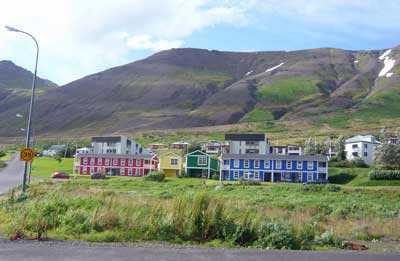
The most common form of accommodation in Iceland is a guesthouse and hostel combination which will have a mix of private rooms and dorm rooms, with shared bathrooms in down the hall. Most of them have fully equipped shared kitchens, so self-catering is at least as popular as eating out while exploring Iceland outside of Reykjavik.
High season (June through August) typical accommodation prices
All prices quoted in US dollars at a rate of about 110 Krona to US$1 in December, 2016.
- Hostel dorm bed: US$34 to US$58
- Single private with shared bathroom: US$85 to US$135
- Double private with shared bathroom: US$118 to US$140
- Double private with en-suite: US$130 to US$320 (and up)
Prices in Reykjavik are a bit higher than elsewhere in the country, but not by much. Prices in the off season are about 30% lower than in high season, but in the slowest months many places close so rates never go much lower than this.
Most Iceland guesthouses are NOT on the normal hotel-booking sites
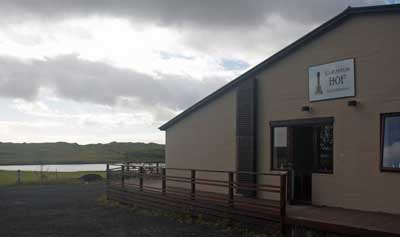
The good news is that when you get to Iceland, the tourism office will give you a directory of almost every guesthouse on the island, and there are other ways of finding these guesthouses and other informal accommodations. Even as of late 2016 you should be able to book a double room (with shared bathroom) for about US$120 per night in most towns in Iceland. If you do a hotel search you might see prices that are double that, but those are in the few formal hotels with 24-hour lobbies and such.
Increasingly, Airbnb and other online rental sites are the best place to find guesthouse accommodation in Iceland. As of only a few years ago, most places would be booked by phone or in person on arrival day, but now more and more places can be pre-booked, at reasonable prices.
Sleeping bag accommodation in Iceland

In a ‘sleeping bag accommodation’ (as it’s known in Iceland) you’ll get a bed with a mattress and often a pillow. So with even a cheap indoor sleeping bag, you’ll be comfortable and warm while saving quite a bit of money. For those renting cars, this is a highly recommended strategy.
You can rent sleeping bags in Reykjavik starting at around €12 per week.
Most Iceland attractions are free (the good news)
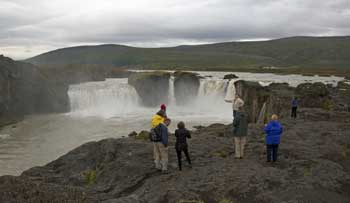
So to see all the glaciers and waterfalls and volcanic beds and other scenic attractions, it’s all free of charge with no admission cost or even parking fees. The larger attractions also have visitor centers where you can get local advice for free as well.
Iceland transportation: Rental cars and buses
Even as a lifetime public transportation fan, I’m very glad I gave in and rented a car to tour Iceland, even as a solo traveler. For the most part the roads are in perfect condition and virtually empty even in high season, so driving couldn’t be easier. Also, the country has stunning vistas every time you turn a corner, so being able to stop in the middle of the road even if there is no room to pullover, is critical.
The buses are modern but also expensive and running on very limited schedules. If you only have enough time to cover the main sights along the southern coast you might buy one of the bus passports that allows you to hop on and hop off, though a rental car is still much better and easier.
Rental cars in Iceland: What you need to know
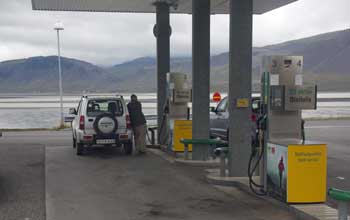
For an extra fee you can pay to reduce that deductible to almost nothing, but the more popular add-on is the Gravel and Glass insurance. For around €10 per day with this coverage you have a zero deductible if the vehicle gets damaged by gravel or if any glass gets broken by flying rocks (or anything else). Unfortunately, many of Iceland’s side roads and even a few of the main roads are covered in gravel, and if you drive at anything above a crawl, there will be some gravel flying around.
Personally, I normally decline add-ons like this but in this case I bought the Gravel coverage after reading a few horror stories in online reviews. I didn’t get any damage that I’m aware of, but the peace of mind was worth a LOT when driving on isolated gravel roads so I wasn’t petrified that I was chewing up the paint job just trying to stay safe on the roads.
Rental cars in Iceland
- 2-wheel drive compact (manual): US$230 per week and up plus add-ons
- 2-wheel drive compact (automatic): US$270 per week and up plus add-ons
- 2-wheel drive mid-size: US$450 per week and up plus add-ons
- 4-wheel drive van or SUV (automatic): US$650 per week and up plus add-ons
Daily rates are about 20% as much as weekly rates, so 5, 6, or 7 days cost the same.
Add-ons
Gravel coverage: US$10/day
GPS (highly recommended): US$10/day
Additional collision waiver: US$10/day
Fuel prices in Iceland
Every gas station in the country has the same prices, which don’t seem to change much. As of December 2016, a liter of petrol is 194 Krona, which is about US$1.75 or €1.63, or about US$7.50 per gallon.
Bus pass prices in Iceland
For a quick day trip from the airport to some local sights you can spend as little as US$90 per person, but for the longer distance buses you’ll spend at least US$130 to US$250 depending on length of time in order to hop on and hop off.
A Ring Road passport will cost around US$400 per person, so for two people it’s no cheaper than renting a car, even after fuel is taken into account, and for 3 or 4 people it’s definitely cheaper renting a car.
Food prices in Iceland
Here’s the thing: sit-down restaurants in Iceland are very expensive by international standards, so there aren’t very many of them. Obviously Reykjavik has many restaurant choices but most smaller towns might have only a few at most. The good news for budget travelers is that fast-food options are more plentiful, and self-catering is even cheaper and easier.
Restaurant prices in Iceland
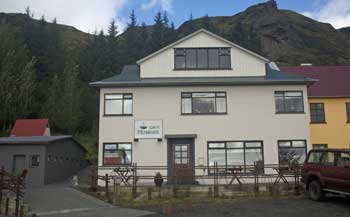
A soft drink, coffee, tea, or even bottled water will generally be between US$3 and US$5 in a restaurant. A pint of beer will typically start at around US$7 at even the cheapest places, while wine and spirits cost even more.
Fast food prices in Iceland
In Reykjavik and larger towns (which might only have 2,000 residents) you’ll have many fast food options including Subway, Quiznos, and usually a few local burger or hot dog places. Prices for a sandwich at Subway are about US$6 for a 6-inch and US$10 for a foot-long, so they aren’t too much higher than elsewhere in Europe, and are sure cheaper than proper restaurants.
More good news for drivers is that many gas stations around the country have fast food restaurants built in, so it’s fast and easy to pick up a sandwich or hot dog by the side of the road.
Hotel breakfast prices in Iceland
Many hotels and guesthouses in Iceland serve breakfast, but it’s almost always at an extra fee, and many don’t serve anything at all. If a breakfast is offered it will typically cost between US$12 and US$15 for a buffet of cereals, bread, cold cuts, cheeses, hard boiled eggs, juices, coffee and tea, and perhaps some pastries.
Making your own self-catering breakfast will be cheaper, but since you can stuff yourself for a flat fee at the breakfast buffets it might be worth it to save yourself the hassle of shopping the day before and making breakfast in the morning.
Self-catering in Iceland
The best budget tip for Iceland is to buy and prepare your own food, and you can literally do it for all three meals per day if you prefer. Since Iceland has almost no national “must-try” dishes, you can buy and prepare your own food without worry about missing anything meaningful.
Nearly every guesthouse in Iceland has a shared kitchen where at least half the guests will be storing and preparing breakfasts and even dinners. They have refrigerators, coffee makers, electric kettles, pots, pans, dishes, and silverware, as well as salt and other spices, so you can buy just the food and you’ll be able to prepare it all.
Supermarket prices in Iceland

For example, you can buy a 400 gram (1 pound) block of Havarti cheese for around US$5, but a similar looking cheese right next to it on the shelf might be US$15 for the same amount. The same is true for lunch meats. Sliced ham can be US$3 for enough to make 2 sandwiches, but sliced roast beef might be US$10 for the same amount.
Some sample prices in the cheaper Iceland supermarkets
- Sliced white bread: US$1.70 per large loaf
- Fresh baguette: US$1.50 to US$2 each
- Hot dog buns: US$2.50 for 5
- Pork hot dogs: US$3.50 for 5 large hot dogs
- Cheap Havarti or other local cheese: US$5 for 400 grams (1 pound)
- Imported cheese: US$10 to 15 for 400 grams (1 pound)
- Sliced ham for sandwiches: US$5 for 400 grams (1 pound)
- Sliced roast beef for sandwiches: US$12 for 400 grams (1 pound)
- Pasta: US$1.50 for .5 kilogram (1.1 pounds)
- Pasta sauce: US$3 for a .5 liter jar
- Ground beef: US$5 for .25 kilos (half pound)
- Bake-at-home pizza: US$5 to US$7 for one person
- Bag of tortilla chips for 2 or 3 people: US$2
- Jar of salsa for those chips: US$3
- Breakfast cereal: US$3 to US$5 per box
The prices above are for many of the cheaper and more common things that budget tourists buy in Iceland. As mentioned above, if you want something exotic and imported, it might cost double or triple what you pay at home, if you can find it at all.
Alcohol prices in Iceland
In restaurants and bars throughout the country you’ll pay at least US$8 for a pint of beer, and at least US$10 for a glass of wine or a simple cocktail. If it’s a fancy place you’ll pay even more, of course.
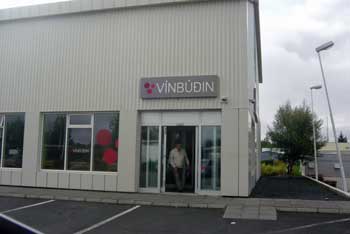
Here are some typical prices for alcohol:
- 330ml can of local beer: US$2 to US$3
- 500ml can of local beer: US$2.50 to US$4
- Cheapest bottle of wine: US$10 to US$12
- .7L bottle of off-brand vodka: US$30
- .7L bottle of mid-level brand vodka: US$50
Bottom line on doing Iceland as cheaply as possible
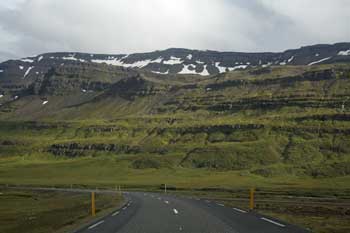
Whether you are going to get dorm beds or private rooms, as long as you will have your own wheels it’s worth renting a sleeping bag. You get the same bed and same services for about US$10 less per night, which will pay for a week’s rental of an indoor sleeping bag.
Unless you are a terrible driver or afraid to drive, it’s highly recommended to rent a car instead of trying to get around using buses. Once you get there you’ll see that having 100% flexibility with a car compared to almost no flexibility with a bus, is worth a LOT.
Instead of trying to be cheap with transportation, be cheap with self catering food and drinks for yourself. If you have at least a small group of people you’ll be able to have a party each evening in or near the shared kitchen of your guesthouse, and it will be more lively than any restaurant in town.

Roger,
I am a frequent contributor to TripAdvisor forums and often give specific advice to other trip planners after I post photo trip reports for others to use in their own planning. So I know well the time commitment it can take to answer all of the questions from people who post questions. You are to be commended for your extremely patient and lengthy answers to all of the questions that have followed your original post. You have a big heart.
I will be traveling solo this upcoming July for about three weeks, with two days in Reykjavik and then 18-19 days to drive clockwise around the island. I will be spending about four days in the West Fjords and then slowly making my way around the Ring Road with quite a few spur roads side trips. I hope to do quite a lot of 2-3 hour day hikes. I am en enthusiastic amateur photographer, so the Iceland landscapes certainly beckon!
I was originally going to spend fewer days on the island because of how so much on the island is expensive, but reading your post and answers to queries has given me confidence that I can come within my proposed budget even though I will be there for quite a while. So … thank you, thank you, THANK YOU for your extremely detailed budget advice on how to work your way around the island using guest houses and small groceries (and shared kitchens) – that all fits my travel style quite well. Before I read your post, I was not finding any such advice in the three guidebooks I am using.
I do have one question for you …
1. Since I will be staying in quite a few very small towns along the way, I am not sure that my guidebooks will list all the shared guesthouses you mention. Are you aware of any online listing that includes most of them with the email addresses to contact the hosts? I understand why they can’t have a website like a hotel would have, but I am not willing to wing it once I get there since I will be traveling in the height of the busiest time of the year. I would like to book all of my guesthouse reservations before the winter is done so I am not scrambling later. In the absence of a convenient online listing, is there a catalogue that I could have sent to me by some type of Iceland tourism board that would have all or most of these smaller guesthouses listed? It all seems like a fantastic way to not just save significant money, but also a way to easily meet other travelers as you share kitchen or dining room space – which sounds appealing given that I’ll be on the road for three weeks solo.
Thanks once again for your efforts to so patiently answer so many travelers’ questions!
Mike,
I appreciate that you took the time to write those nice things. It’s that sort of thing that helps running this site and answering questions like this very worthwhile.
I totally understand your preference to pre-book guesthouses and such, and I am usually the same way. But in Iceland, as you’ve already discovered, it’s really only the most expensive places that are bookable online in advance. One day that will change, though for now during high season the country runs kind of an Airbnb-style system where many residents offer a few bedrooms or open up a nearby house to guests, and almost all of it is on short notice.
The typical way it works is that when you rent a car or visit one of the official tourism offices they will give you a current catalogue/magazine sort of thing that lists nearly every guesthouse on the island. As far as I’m aware and what I was told, most of these places empty out each morning because most people only stay one night unless they are in a larger town, and then a new batch of people call or email them throughout the day for that night. It sounds like it would be easy to get shut out, but evidently that happens very rarely. So as long as you know which city you are heading to that night, you can almost always call in the morning and book a room, usually just on word of mouth.
There must be a way of getting one of those catalogues in advance, and I’d think they would produce a PDF version of it at this point, partly for environmental reasons. So that will be the key. You might also check Airbnb if you haven’t already, as I’d think they’d have a lot of listings. It’s an amazing place and you’ll have the time of your life. I am also sure that finding rooms on short notice will be far easier than you might expect, but some people just feel better when things are all booked, so hopefully you can get at least some of that done. Have a great trip and let me know if you have any other questions. -Roger
Hi Roger,
Very useful information in this page and thank you for that!
My boyfriend and me are visiting iceland at the end of October to early November, for a week. We are planning to rent a car, with budget of course. He’s suggesting a 4-wheel drive car due to the potential of us ending up in snow. I’m not sure about the snow though.. is there snow in Iceland during this period? I’m thinking that a 2-wheel drive is enough for us.
Also, our main purpose is northern lights! Is it a better idea to drive to the sites or to get a tour for it? I heard that if you fail to catch northern light for the tour, they either refund you or re-tour you at no cost.
The neighbourhood we chose to stay will be at Hallgrimskirkja area. Is it a good area for tourist?
Thank you in advance!
Jane,
The Hallgrimskirkja Cathedral is only about 4 short blocks from the main downtown street in Reykjavik, and that is the best area for tourists as that is where most of the restaurants and bars and shops are located. However, parking in that area will be limited, and you’ll be able to see the few sights in that area in a day or maybe two at the most. It’s also the most expensive area for hotels. If I were you I’d think about staying maybe one night in Reykjavik, and spending the other 3 nights in a smaller town, hopefully nearer the potential Northern Lights sights.
I don’t know much about the best way to see the Northern Lights in Iceland, but a few people have mentioned those tours that include hotels and transportation to the best viewing spots. They sound like a good deal to me, especially since there seems to be an art to finding the best places to view the lights. But if you do choose to do it on your own, you can save money by finding a hotel in a smaller town. Honestly, Reykjavik is kind of a dud of a capital city. It’s pleasant enough, but also expensive and kind of plain. As I’ve said so many times before, the real magic in Iceland is the nature sights.
There is at least some snow in Iceland all the time, but I don’t know when it begins to fall closer to sea level. I’d guess that it would be later than October. Still, a 4WD vehicle might be necessary. The thing is, Iceland has a normal network of highways, and you can go on all of those with just a 2WD vehicle. But if you want to visit the interior of the island, as in going up into the foothills of the volcano, you’ll need a 4WD. The rental companies forbid you from driving on those roads with a 2WD vehicle, so it all depends on your route. All of that said, I rented a 2WD for a week and did the whole Ring Road and many other little roads going off of it, and I was fine. The 4WDs cost quite a bit more, and they let you drive on pretty much any road on the island. I just don’t know if you’ll NEED to drive on those kinds of roads to see the Northern Lights. I wouldn’t think so, but I’m just not sure.
Let me know if you have any other questions. -Roger
Very useful for me Roger!
We are aiming to stay at in airbnb though, it’s relatively cheap compared to hotels. just didn’t know which area would be the best.
i’m guessing it’s good to shift around since we are renting a car. Some days in city, some at the smaller town.
I’ll search on the tours on northern light, hopefully it brings me something good.
Thanks alot Roger!
We are planning a trip in the beginning of March 2017 main purpose to see the northern lights. Icelandair is offering around trip airfare, 7 nights at the cabin includes breakfast, around trip transfers from airport to hotel and northern lights with glacier hike for about $1100 per person. To me this does not seem to expensive. We usually backpack and stay in inexpensive places. Drive ourselves. But in March we were not sure what our best options are. Any opinions?
Sheri,
Unfortunately I don’t know much about those Northern Lights packages. But I agree that US$1,100 per person seems pretty reasonable for airfare and a hotel, although I guess that depends on your starting airport. As long as the operator looks reputable, I’d jump on that. Iceland is fairly expensive so doing it on your own would almost certainly cost more.
And more importantly, figuring out exactly where to go on your own to see the Northern Lights, and then getting there in a rented car or bus, would be challenging and also expensive. Tourism to Iceland is booming lately, but still the island is mostly empty with a tiny population, so there just aren’t many resources to shepherd tourists around once you get outside Reykjavik. So as long as you think the company offering the deal is legit, I think it’s a great deal. -Roger
Hi Roger,
Thank you for the informative blog, it will help a lot for my visit to Iceland in Ovtober. I am struggling to find the location for a night stay over for Golden Circle Tour. I will leave on Monday and get back to town on Tuesday. Which area would be more logical to stay on Monday night?
Eva,
I think most of the Golden Circle tours leave from either the airport or from Reykjavik. And I think most of them are around 8 hours, so they pick you up in the morning and drop you off in the late afternoon.
There are a few reasonably priced hotels by the airport. Reykjavik is fairly expensive for hotels, but at least it’s interesting to see for one day or even an evening. Outside of those places, there aren’t many hotels in that area. There are a few towns with a few hotels each, and those would be cheaper than staying in Reykjavik. I guess I’m not sure what your question is. Give me more information and I’ll be glad to help you find something. -Roger
Hi Roger
I am going to Reykjavik 28th October 2016 and the main reason is to see the Northern Lights but would like to know your advise on the best place to see the lights. I will be there for 4 days, flying home on the 5th day. So wanting to make the most of this short trip, I am thinking hot springs, geysirs, waterfalls and potentially whalewatching plus the Norther Lights of course. We are looking to hire a small car. Can you make any suggestions of an itinerary that would fit my needs?
Denise,
It seems that Iceland has two main tourism seasons, the main one in the summer where people come to see the natural beauty, and the smaller one in and near winter when people come to see the Northern Lights. Unfortunately, I have no first-hand experience of the Northern Lights scene. I’ve read about it and seen a few travel shows on them, but not nearly enough to confidently help out on this. Hopefully I can learn more about this on my next Iceland trip next year. Sorry I couldn’t be of more help. -Roger
Hello Roger,
Thanks for all your insights! I’m planning a trip to Iceland with my girlfriend during this December. We are looking at some self-drive tours like this one: https://guidetoiceland.is/book-holiday-trips/aurora-holiday-in-iceland-7-days. Would you recommend taking these kind of tours or should we do it by ourselves? If we should do it by ourselves, where can we get the information of all the places to visit, maps, places to stay, etc.?
Thanks in advanced!!
Eduardo
Eduardo,
I never looked into one of these self-drive holidays, but now that I’ve seen this it actually looks fantastic. If you were going during the summer and you didn’t care about the Northern Lights, I’d say that you could easily do it all yourself and save quite a bit of money. During the summer months there is such an infrastructure in place that paying a lot for the help is a waste of money for most people. However, most guesthouses are closed outside of the summer months, and some of the restaurants as well. As such, I think it could be quite tricky to figure out your route and find a room on your own, at least without dozens of hours of serious research.
And also, the main summer tourist route along the Ring Road includes many places that might not be ideal for Northern Light sightings, while this trip seems specifically geared for that. It’s not cheap, of course, but nothing in Iceland is cheap. If you can afford a package like this, I think it’s a great idea. Now, if you were to be asking about a bus trip where 44 people ride around together trying to see the lights, I’d suggest something else. But this self-drive thing looks like the best of both worlds. One of the most magical things about Iceland is the isolation and solitude that you can get when you explore on your own. It’s a nearly completely empty country, except for the gorgeous landscapes. So being able to see it on your own time, and not have to worry about where to sleep and where to go, sounds ideal. Have a great trip. -Roger
Loved this!! thanks for all the info, really helped when trying to figure out how to budget for this trip
Hey Roger – I just want to thank you for your super insightful website.
You are clearly extremely passionate about your travels and, especially, about sharing and supporting others! with their travels which is so nice to read 🙂
We a will be heading to Iceland next week and are really looking forward to it. Your website has been a great source of inspiration and information and for this we thank you 🙂
(I appreciate you taking the time to say this. I’m sure you’ll love Iceland. -Roger)
Hi…we are 60+ couple planning to be in Iceland for 6 days starting end of August …I’ll be renting a car ( thanks to all the good advice on this site) . Originally I was planning to rent an apartment in Reykjavik for the 6 days and doing day trips out of there, but now I’m thinking that may not be the best plan. Which towns would you rent in and for how long doing perhaps the ring road tour..
( or any other suggestions would be great) Thanks for this great site!
Allan,
On my own trip to Iceland I spent 2 nights in Reykjavik and then 7 nights doing the Ring Road with my rented car. As mentioned in previous comments, I could have done the Ring Road in 6 days pretty comfortably if I wanted or needed to. It’s a lot of time on the road doing that, but honestly that’s 75% of the appeal of the Ring Road. It’s just glorious and gorgeous all the way around, and stopping every couple hours for a waterfall or hot spring is just a bonus.
So if you could do 7 or 8 days, I’d recommend doing something very similar to what I did. But if you only have 6 days I’d say your choices are to pretty much skip Reykjavik and just hit the Ring Road right away, or base yourself primarily along the southern coast. Honestly, I’ve been to pretty much every capital city and large city in Europe, and Reykjavik is kind of a dud compared to nearly all of them. Not to say that there is really anything wrong with the city, it’s just that the rest of the country is so amazing that it’s a shame to spend a lot of time in its only somewhat crowded and charmless place.
The Ring Road really is wonderful, however I’d say at least 50% of the major sights are along the southern coast, stretching from the Reykjavik area all the way to Hofn. So if you are locked into the 6 days then I’d spend 2 in or near Reykjavik (as there are some interesting things nearby, namely the sights that are part of the so-called Golden Circle. And I’d spend at least 2 nights based in the town of Vik, which is a small town that has good tourist infrastructure in the middle of the south, and then 1 or 2 nights based in Hofn. Some combination like that will give you an excellent look at some of the natural sights on Iceland, without spending those long (but very enjoyable) days on the road.
As always, let me know if you have any other questions. -Roger
Hi Roger ..
Thanks for ur tips .. I’ll be there in 2 weeks only 7days (let’s say full 6days) and plan to drive around ring road .. Is that possible to do it? On early May do I need the winter tyre? Please advise .. Thanks
Lek,
I did the Ring Road clockwise and I covered the first 90% of the distance in 4.5 days, leaving the final 2.5 days for the sight-heavy final leg between Vik and Reykjavik. In other words, you can definitely do it in 6 days if that is your goal. Some days will require a lot of driving, of course, but honestly that’s a big part of the draw and you’ll have plenty of daylight to do it in. Especially in May, you’ll be almost alone on the roads until you get to the southern coast again, and that is awesome. Many of my favorite memories (and I did this alone, by the way), were rounding a corner in my rental car and seeing a wall of waterfalls or something like that, and just stopping in the middle of the road to look at it and take photos. Often, I could have sat there for 10 or 20 minutes without a car coming behind me or in the other direction.
In a way that might sound so remote that it’s dangerous, but it didn’t feel that way. I had a SIM card and I had phone service almost the whole Ring Road, and there are tiny towns every 50 kilometers or so with petrol stations.
As for winter tyres, I’m not sure. My understanding is that you can choose a normal car or a 4WD vehicle. If you mainly want to do the Ring Road, then a normal car is fine (and much cheaper), but if you want to travel a lot on the interior unpaved roads, you’ll want a 4WD vehicle. Whichever you choose, it should have the appropriate tyres already on it. Have an excellent trip and let me know if you have any other questions. -Roger
Hi Roger
Thank you for your helpful information. I definitely do it around the ring road 🙂 to surway
for my next time trip .. I will let you know when I’m back .. (^_^)v